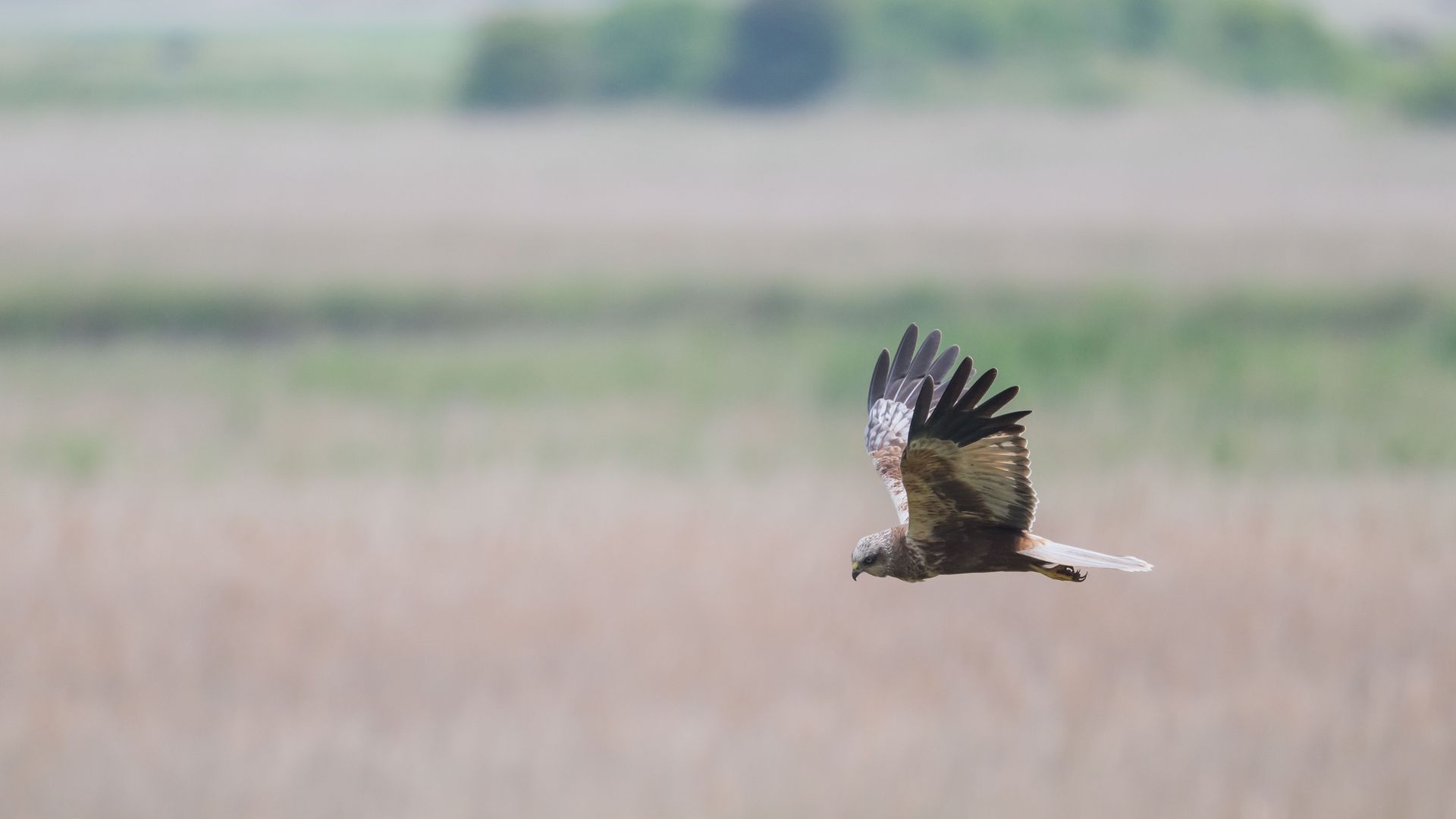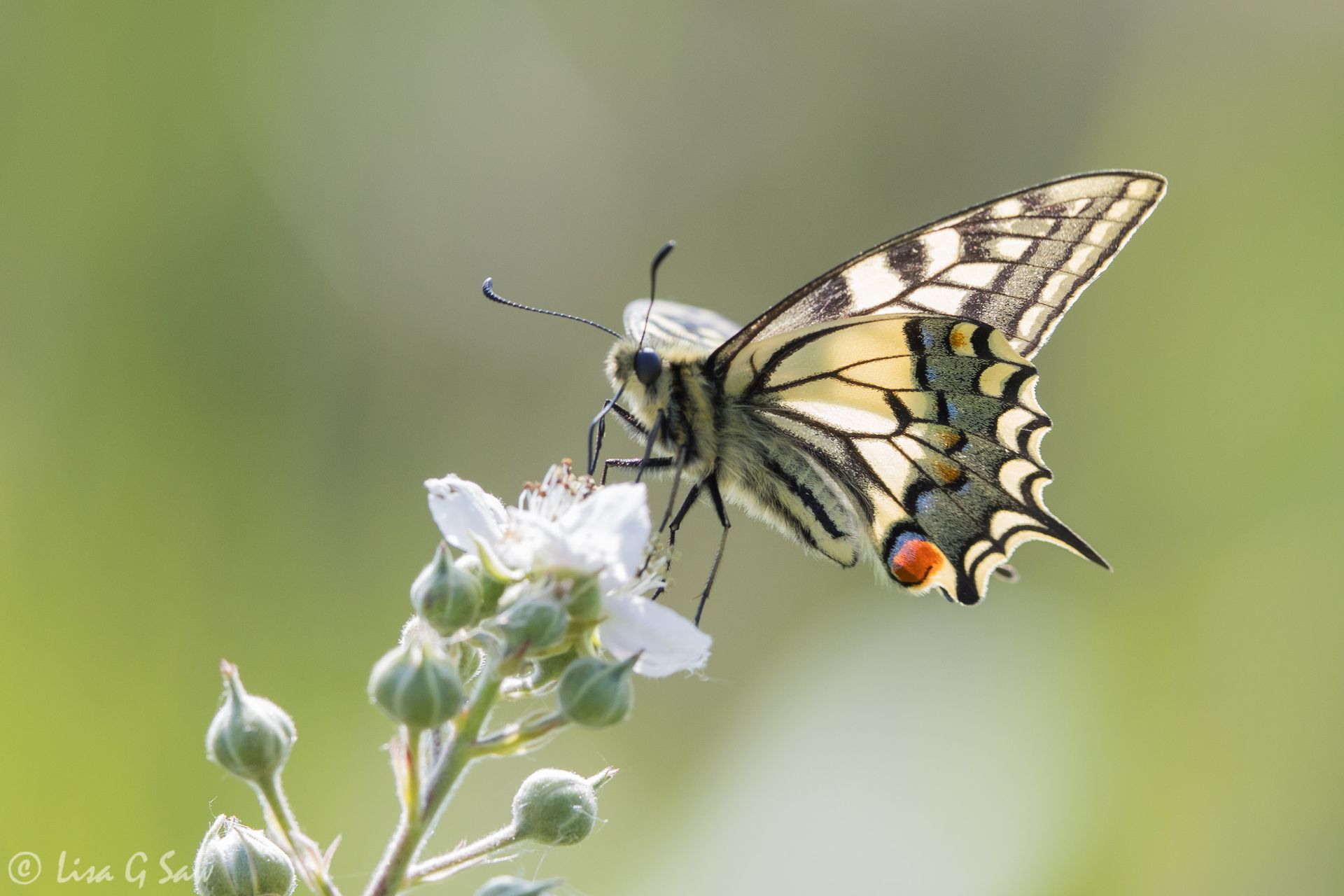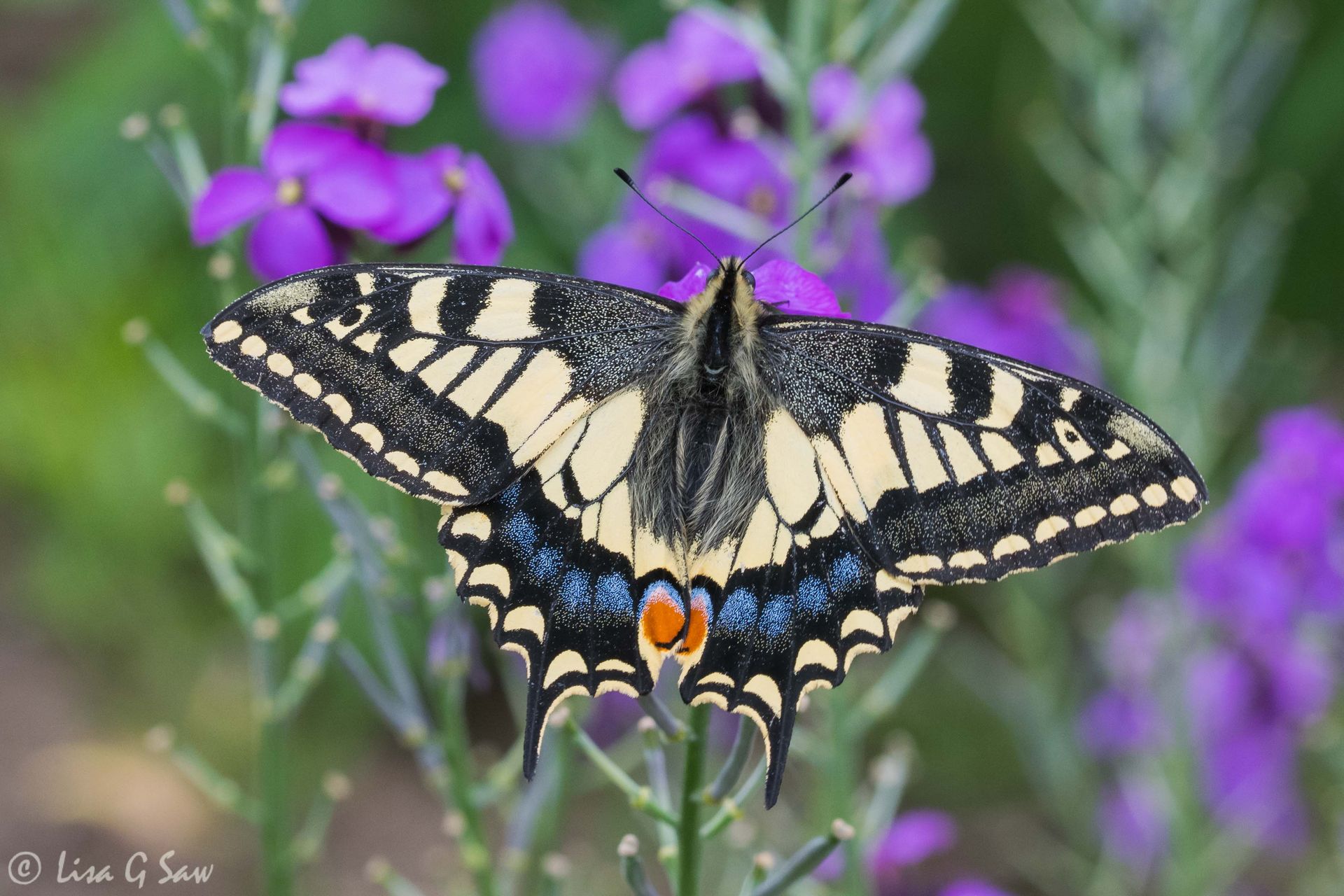Travelling to the Falkland Islands
DEPARTING PUERTO MADRYN
The plan was to have two days at sea, heading towards the Falkland Islands. But, sometimes things don't go according to plan. Unfortunately, someone on board the ship had a serious medical condition and needed to be transported safely back to land, so they could receive the full medical attention they needed in hospital. We'd been warned of this possibility on the very first evening on board, during our briefing. In such situations the boat becomes the ambulance. Prior to our trip, I'd also heard stories of this happening and how the trip could be cut short as a result of it. Obviously, there was concern for the person in question and some days later we discovered their situation improved and they were doing well at the hospital, which was good to hear.
The fact this happened right at the start of the trip was actually the best scenario. We weren't too far away from South America and were able to head to land at Comodoro Rivadavia. After safely evacuating the guest, we continued on to the Falkland Islands and we had just one extra day at sea. At that first briefing, we'd also been warned about a nasty weather system that was slightly ahead of us, so having the delay actually worked to our advantage. If we'd been further ahead on our voyage, we probably would have had to sit tight in port somewhere else to wait for it to pass through.
During the days at sea, Bob and I enjoyed being out on deck with some of our fellow passengers, spotting the wildlife. Some people preferred to do this from the comfort of the observation lounge indoors. Others simply kept to themselves in their cabin. In the lounge area, there was also a varied mix of talks given throughtout the day, by the members of the staff. I attended a few, as it helped pass the time, but generally I preferred to be outside, as did Bob.
It wasn't too cold those first few days and the seas were fairly calm. Whenever we needed to warm up after being out on deck for a while, we'd head indoors. There was an endless supply of hot drinks and at tea time there was always some kind of delicious cake available.
We both enjoyed the wildlife watching, even though there were long periods of not much happening. I kept a keen eye out for vertical spurts of water coming from whales close to the surface of the sea. They were often very far away and not worth photographing, but this Sei Whale was a little closer to our ship. It is the third largest whale species in the world, behind the Blue and Fin Whales.
The Giant Petrels were amongst the many different birds we saw either passing or circling our boat. This one (above) is a Southern Giant Petrel and you can tell because of the greenish tinge to the tip of the beak. Its range overlaps slightly with the Northern Giant Petrel, which we saw several of too, however, it has a reddish bill tip.
When the ship was closer to land, approaching Comodoro Rivadavia, the water was much calmer. It was beautiful and allowed for some interesting reflections and photography. This Black-browed Albatross started to run on water and then took off. I love how the wing tips are still dipped in the water. It's an elegant bird and it was by far the most abundant Albatross species we saw on the whole trip and luckily for us it was often flying close to the ship. It has an impressive wingspan of 2.1 to 2.5 metres! You can see in the photograph how the dark colouration goes across its back from wing to wing.
Occasionally, we were lucky enough to spot different species of Albatross, like this Southern Royal Albatross. Unlike the Black-browed Albatross, its body is white across the back. It also has a white leading edge to the wings, which you can just see (above). If you thought the wingspan of the Black-browed Albatross is impressive, the Southern Royal is even larger with a 2.9 to 3.28 metre wingspan! Unfortunately, it didn't usually fly that close to us.
Amongst the other bird species we saw, there were White-chinned Petrel, Wilson's Petrel and Slender-billed Prion. Bizarrely, I also saw a passerine fly by, which was most surprising this far out to sea and this far south. There was much discussion amongst the birders as to which species it was. I think the census was a Buff-winged Cinclodes. We were very lucky to have some very knowledgeable birders on board, especially as there wasn't a staff member with good birding knowledge. Bob and I benefitted hugely from them and were very grateful they shared their passion and enthusiasm with us. We both learned a great deal.
One of my favourite bird species was the Cape Petrel. We saw A LOT of them on the entire journey! They often were flying close to the boat and circling around, sometimes in small numbers, other times in larger groups. Their stunning black and white wing markings impressed me and it was always a joy to see them. I spent quite a bit of time photographing them on those first few days. The smaller birds, like the Prions and Wilson's Petrel, were faster and trickier to photograph. I needed to practice my flying bird skills before I could attempt photographing them!
Being on deck most of the day, meant that Bob and I didn't feel motion sick hardly at all. The horizon was always in view, even when the swell meant there was a bit more movement up and down. Whilst many passengers were wearing sea sickness patches behind the ear, we wore the nausea wrist bands that work on an acupressure point in the wrist. It is believed to influence the nervous system pathways between the brain and the stomach and digestive system to help prevent sickness. They worked for me most of the trip and only occasionally did I opt for medication. Being distracted always helped. But, looking at mobile phones and reading generally didn't help. Thankfully, for us, we were only sea sick one time, on our third evening. We skipped dinner and went to bed early, which was the best thing we could do. We were grateful it was the only time.
NEW ISLAND
On the fourth day, we reached the Falkland Islands. I had no idea there were so many of them - 780 islands in total! We had two landings on New Island, which is one of the most westerly of the archipelago. We spent the morning at Coffin's Harbour and the afternoon at North Harbour. We had plenty of time on both occasions, which was fabulous. After three days at sea, I think everyone on board was keen to have a good walk on land.
We used inflatable light boats to go ashore, called Zodiacs. Only 10 passengers can be transported in each. Usually about three or four Zodiacs were used to go back and forth between our ship and shore, which meant we could disperse and spread out on land rather than all arrive at the same time. Before disembarking the boat, plus when we returned, we would stand in troughs of water filled with disinfectant. Using the scrubbing brushes provided we had to make sure our boots were clean.
I'll never forget our first Zodiac ride heading to Coffin's Harbour, because a Peale's Dolphin was porpoising literally just in front of us. It was amazing. What a welcome to the Falkland Islands!
COFFIN'S HARBOUR
Our first wildlife sighting on land was the Ruddy-headed Goose, quite literally right at the beach. Although it's fairly common in the Falkland Islands it's rare and endangered on the South American mainland.
Once we left the beach, we saw several male and female Upland Geese on the open grassland, including some chicks staying close to their mother. There were a few males competing for territory, throwing back their head and calling loudly.
One of the main highlights for visiting this island was the large colony of Rockhopper Penguins. They're such a striking penguin species with yellow and black spiky feathers on their head, amazing red eyes, an orange beak and pink feet. When fully mature they only reach about 50cm in height. As their name suggests, they hop a lot, but they were also seen walking. What's so amazing is just how high up the cliffs they are able to hop to reach the nesting site. It's quite remarkable and must take ages and a lot of perserverance.
It was lovely having the time to watch their behaviour. This pair seemed quite happy with the spot they had chosen to build a nest. Then one of them picked up this blade of grass and very carefully seemed to place it on the ground. Well, I guess you have to start somewhere!
The colony was quite dense. There were lots of individuals, but you could usually spot the pairs. As with other bird species, there was a lot of preening and pair bonding.
Amongst the mass of Rockhoppers just one single Macaroni Penguin was spotted on the cliffside across from where we were standing. It's another crested penguin species but with a much more striking yellow crest, so it stood out amongst its neighbours. I took a distant photo, but was hopeful we'd see more of this species later on our journey.
This site wasn't just good for penguins. There was a large colony of Black-browed Albratross sharing the cliffs. Having seen them flying alongside the ship for the previous three days, it was nice to actually see them close up.
Their pair bonding reminded me a little of the Gannets I've seen back in the UK, the way they used their beak to make contact with their partner.
I was pleased to finally get a decent flying shot from a stationary point rather than on a moving ship. They would fly by quite close to the cliffs.
Another unexpected bonus was having such lovely close views of the Straited Caracara. This is an adult with a distinctive white edge to its tail and lovely white markings on the tips of the feathers around its head and neck.
Another species seen at the colony were the Imperial Shag, which are also known as King Cormorants on the Falkland Islands, just to confuse matters! The distinctive blue eye ring is remarkable and the orange-yellow nasal knob rather unusual. I just love the crest of feathers that spike upwards. Notice also the white feathers just above the eye. It was fantastic to have such lovely views of them here.
They were seen flying back to their nests with building materials in their beaks. They knew exactly where to land too, in amongst the crowd, which is quite amazing really. I enjoyed photographing them flying and coming in to land. But, eventually we had to head back to the ship.
NORTH HARBOUR
Whilst we were at lunch the ship relocated to the north side of the island and later we took the Zodiacs ashore again. This time there were Magellanic Oystercatchers on the beach to greet us. We walked over the sand dune and found another open expanse of meadow. There was a pool of water some distance from us, with geese on or near it, plus a lone Magellanic Penguin. We continued walking along the trail, which had been set up for us to follow with posts periodically planted in the ground. Then suddenly a head popped up and it was another Magellanic Penguin much closer, watching us walk by.
At the furthest point on the walk, we reached a small Black-browed Albratross colony with only a few Rockhopper Penguins amongst them. There was some more pair bonding and I spotted one bird sitting on its nest. They use the same nest year after year. Bob and I had some more fun photographing the birds flying passed us at this point.
The view from here along the coastline was impressive.
We then retraced our steps back to the Gentoo Penguin colony, which was at the top of a hill above a beach. There were two circles of them at either side at the top, out in the open, unlike the Rockhoppers that were nesting amongst the rocks. They seemed somewhat vulnerable here, especially with some Striated Caracaras lurking around the perimeter. I guess the safety is still in the number of them close together.
Many of the penguins looked as though they were already laying on eggs, incubating them. But some were up on their feet squarking at their neighbours noisily.
The Gentoo Penguin is quite easily distinguished because of its wide white patch above the eye. They are the third largest penguin species ranging in height between 70-90cm.
It was great to have the opportunity to witness some nest building. The Gentoos pick up stones, one at a time, and waddle back to their nest to lay each one down carefully.
We were really lucky to spot this adult standing up briefly, to reveal the eggs that it was safeguarding. The second egg is harder to see but tucked further under the penguins feathers. A second penguin stood up close by soon after and it was easier to see the two eggs. Both adults take responsibility for incubating the eggs and will change over each day. Their partners were seen returning to the nests, walking uphill, as we walked down towards the beach.
It was nice to see a few more Magellanic Penguins on the beach, though they were far fewer in number. They have black beaks and a white arc from above the eye, towards the back of the head and curving around and joining under the chin. They are slightly smaller than the Gentoo Penguins.
We'd had such an amazing day! We'd experienced so many wonderful wildlife moments on our first day on land, but for me there was one encounter that was the undeniable highlight. It was watching the Gentoos coming in to shore. There were quite a few groups of them swimming towards the beach. Bizarrely, they didn't head straight in, they would zigzag their way in. Presumably this was a defence tactic. We did spot some sea lions and dolphins, but they weren't predatory. It's the Leopard Seals that they have to be wary of.
I loved seeing the Gentoos swimming through the waves, then being washed up onto the beach, clumsily getting to their feet and waddling across the sand.
It was so comical at times.
Some of them timed their exit to precision, quite literally popping up out of the water in a burst of energy, propelling themselves into the air. I was thrilled I'd been able to capture this moment. They would usually land on their bellies rather than their feet. It absolutely looked like such fun! Unfortunately, we had to leave soon after this. We saw another group approaching, but they were taking their time, swimming left then right, but not in a rush to come ashore. It was the only time I wished we could have stayed longer.
STANLEY
The following morning we pulled into the harbour at Stanley, which is the capitol of the Falkland Islands. It's located on East Falkland, the largest island of the archipelago. We had a few choices of things to do, but we were left to our own devices as to how we organised our transport. Whilst it would have been possible to take a taxi to visit other parts of the area to see wildlife, as many of our fellow passengers did, we chose to have some quiet time to ourselves and enjoyed a walk along the waterfront. It was lovely. The sun was shining and it felt quite mild. Almost immediately we stepped off the jetty we saw some wildlife as we walked westwards.
I was particularly struck by the Grey Duck, which doesn't seem like a very fitting name. It is known as the Patagonia Crested Duck elsewhere. It's red eye really stands out against its plumage. I like the almost spotted look of the feathers. Also impressive was a bird we'd spotted at Punto Loma and on New Island - the Dolphin Gull. It's red beak and legs make this gull species stand out from the rest. I think it's one of the most attractive gulls I've seen.
The duck species we were keen on seeing the most was the Steamer Duck. We'd tried but failed to spot it along the coast from Puerto Madryn, so to finally spot a pair in the harbour was great. This one shown is the male. The female has a brown head. They're considered a flightless bird, because they seldom take to the air. I was a little disappointed we didn't get to see it swimming like a paddle steamer, as it is known to do - flapping it's wings and feet on the water (hence the name). But, I was glad we were at least lucky enough to finally see a few.
From Stanley it was time to head out to sea again, this time to South Georgia. It would take two days to reach the island. I'd heard accounts from friends before our trip that South Georgia is the pearl in this region and an amazing place to see wildlife. I couldn't wait. If the weather was on our side and we could have landings on the island, which aren't guaranteed if the conditions aren't right, there might be the opportunity for some fabulous wildlife sightings. The Falkland Islands had whet the appetite and we were both ready for more.
Next post in series: Travelling to South Georgia
To see a smaller selection of my favourite photos from the holiday, click here.



